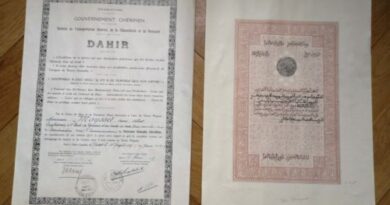The Earliest Known Royal Decrees in History
A royal decree is an official order or proclamation issued by a monarch or sovereign authority, often carrying the weight of law. These decrees have been instrumental in governance, administration, and the dissemination of royal will throughout history. Identifying the first royal decree is challenging due to the antiquity of early civilizations and the fragmentary nature of surviving records. However, several ancient decrees provide insight into the early use of royal proclamations.
1. The Decree of Shepseskaf (c. 2500 BCE)
Shepseskaf, the last ruler of Egypt’s Fourth Dynasty, issued a decree concerning the completion of his predecessor Menkaure’s mortuary temple. This decree, inscribed on a limestone slab found in Menkaure’s temple, outlines:
- Completion Orders: Instructions to finish the temple’s construction.
- Offerings: Specifications for daily offerings to be made.
- Protections: Exemptions for the temple’s estate and staff from taxation.
This decree is among the earliest surviving royal proclamations from the Old Kingdom period. citeturn0search12
2. The Decrees of King Neferkauhor (c. 2100 BCE)
Neferkauhor, a ruler during Egypt’s Eighth Dynasty, issued decrees that were discovered in the temple of Min at Coptos. These decrees, inscribed on stone fragments, include:
- Appointments: Assigning individuals to specific religious posts.
- Religious Directives: Orders related to temple activities and rituals.
The decrees were carefully buried beneath the temple floors, indicating their significance. citeturn0search9
3. The Code of Ur-Nammu (c. 2100–2050 BCE)
While not a decree from a single monarch, the Code of Ur-Nammu from ancient Sumer (modern-day Iraq) is one of the earliest known law codes. Attributed to Ur-Nammu, the founder of the Third Dynasty of Ur, this code includes:
- Legal Precepts: Laws covering various aspects of society, including justice and commerce.
- Penalties: Prescribed punishments for specific offenses.
Although not a royal decree per se, it reflects the early use of written proclamations to govern societal conduct.
4. The Rosetta Stone Decree (196 BCE)
The Rosetta Stone, dating to 196 BCE, features a decree issued during the reign of Ptolemy V. This decree is notable for being inscribed in three scripts: Egyptian hieroglyphs, Demotic script, and Ancient Greek. It includes:
- Royal Cult Affirmation: Confirming the royal cult of Ptolemy V.
- Tax Exemptions: Granting tax reliefs to temples.
- Instructions: Orders to erect copies of the decree in temples across Egypt.
The Rosetta Stone was pivotal in deciphering Egyptian hieroglyphs, bridging ancient and modern understanding. citeturn0search13
Conclusion
While pinpointing the very first royal decree in history is challenging due to the scarcity of early records, these ancient decrees exemplify the longstanding tradition of monarchs issuing proclamations to govern and guide their societies. From the directives of Egyptian pharaohs to the codified laws of Mesopotamian kings, royal decrees have been foundational in shaping civilizations and their legal frameworks.
Note: The information provided is based on historical records and archaeological findings. Due to the ancient nature of these decrees, interpretations may vary as new discoveries emerge.
1. The Impact of Early Royal Decrees on Society and Law
📜 A. Establishing Legal Authority and Social Order
- Early royal decrees helped transition societies from tribal or local customs to centralized legal systems.
- They established laws on property, marriage, inheritance, and commerce, creating predictable rules for society.
- Punishments for crimes were codified, reducing arbitrary justice and blood feuds.
📜 B. Strengthening the Monarch’s Power
- Decrees symbolized the monarch’s divine or absolute authority, legitimizing their rule.
- In societies like Babylon and Egypt, royal decrees were presented as laws from the gods, enhancing the monarch’s spiritual and temporal power.
📜 C. Promoting Religious and Cultural Values
- Many decrees reinforced religious practices (e.g., Pharaohs’ decrees on temple offerings).
- They defined moral behavior (e.g., Hammurabi’s Code: “An eye for an eye”) and social responsibilities (e.g., Ur-Nammu’s Code: Laws on marriage and slavery).
2. How These Decrees Influenced Modern Legal Systems
🏛️ A. Influence on Legal Codes
- Hammurabi’s Code introduced concepts of proportional justice, which influenced later laws in ancient Rome and Greece and modern penal codes.
- The Code of Ur-Nammu introduced the concept of monetary compensation (fines), a system that persists in modern civil law.
🏛️ B. Concept of Written Law
- The public display of laws (e.g., Hammurabi’s stele) established the principle that laws should be known and accessible to the public.
- Modern constitutions, such as the U.S. Constitution, continue this tradition of publicly accessible laws.
🏛️ C. Legal Precedents and Judicial Practice
- Ancient decrees were some of the earliest examples of case law or precedent-based rulings, which are foundational to common law systems (e.g., the UK and U.S.).
3. Comparisons Between Ancient and Modern Royal Decrees
| Aspect | Ancient Royal Decrees | Modern Royal Decrees |
|---|---|---|
| Purpose | Legal codes, religious orders, construction projects, and taxes | Policy reforms, appointments, declarations of states of emergency |
| Authority Source | Divine right or absolute monarchy | Constitutional authority or ceremonial power |
| Format | Inscribed on stone tablets, papyrus, or metal plates | Printed in official gazettes, digitally published |
| Legal Force | Supreme and unquestionable | Subject to constitutional and parliamentary review |
| Public Awareness | Displayed publicly (e.g., stele) | Published in official state bulletins and online platforms |
| Punishments | Often harsh and corporal (e.g., Hammurabi’s “eye for an eye”) | Proportional, humane, and subject to human rights laws |
| Religious Influence | Strongly intertwined with divine laws | Minimal in secular states but present in some monarchies (e.g., Saudi Arabia) |
4. Examples of Royal Decrees from Different Eras Showing Evolution
📜 A. Ancient Era:
- Hammurabi’s Code (Babylon, c. 1754 BCE): First codified laws with proportional justice (“an eye for an eye”).
- Ur-Nammu’s Code (Sumer, c. 2100 BCE): Earliest surviving legal text with compensation-based penalties.
🏛️ B. Medieval Era:
- Magna Carta (England, 1215): Limited the power of the monarchy and introduced the concept of due process.
- Golden Bull of 1356 (Holy Roman Empire): Established rules for electing the emperor, shaping constitutional monarchy.
💠 C. Modern Era (20th Century):
- Spanish Constitution Decree (1978): Transitioned Spain from dictatorship to a constitutional monarchy.
- Dahir on Family Law Reform (Morocco, 2004): Promoted gender equality and reformed family law.
- Royal Decree Allowing Women to Drive (Saudi Arabia, 2018): Major social reform in Saudi Arabia.
5. Legacy of Early Royal Decrees Today
🏛️ A. Influence on Modern Constitutions
- The principle of codified laws from decrees like Hammurabi’s and Ur-Nammu’s inspired modern civil law systems (e.g., France’s Napoleonic Code).
- The concept of equality before the law, introduced in ancient codes, became a cornerstone of human rights laws.
🏛️ B. Role in Symbolism and Ceremony
- Monarchs in modern times issue royal decrees symbolically to mark significant national events (e.g., Queen Elizabeth II’s royal assent to laws).
- In countries like Morocco and Saudi Arabia, royal decrees remain legally binding instruments of governance.
🏛️ C. Public Accountability and Transparency
- Modern royal decrees are published in official bulletins, promoting transparency and public access to laws, continuing the tradition from Hammurabi’s public stele.
🏛️ D. Legal Precedents and Interpretation
- Courts still use historical royal decrees and charters to interpret laws, especially in countries with long monarchical histories (e.g., UK’s Magna Carta is cited in legal arguments about civil liberties).
6. Conclusion: The Lasting Influence of Royal Decrees
The earliest royal decrees in history laid the foundation for modern legal and governance systems, establishing principles such as:
✅ Public codification of laws
✅ Proportional justice
✅ State authority and sovereignty
✅ Religious and moral obligations in law
Though their form has evolved from stone tablets to digital publications, their essence remains the same: to express the authority of the state and define the rules by which society operates.
The study of royal decrees is more than a historical exercise—it is a journey through the development of human civilization, from the laws of ancient Babylon to the constitutional monarchies and republics of today.


